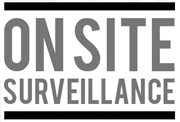Why is the camera on the jib and not the block?
During trials, and on speaking to crane operators, we found that when the camera was mounted on the block:
1) The camera had a very limited direction of view. If something with a significant square meterage was slung, (plywood or a flat lifted shutter etc) vision was drastically impeded due to the proximity of the camera to the load.
2) The operator could only see from the block down, with no ability to see anything above or around the block. At sites where all sliding platforms are stacked on levels directly above each other, there have been instances when a deck was pushed out ABOVE the deck that the load was being landed on, interfering with the ropes. With a camera on the block, the operator would not know this has happened and may instead catch the deck above while hooking up.
3) When slewing around in the blind, the operator, or even the wind, may unknowingly cause a swinging load. With a camera on the jib this problem is minimised as it is obvious that the load is not hanging straight and you are able see the swing produced and hence counteract it. By doing this, the load becomes stable and safer for the rigger to handle and land. To prevent the camera from swinging with the load (as it would if installed on the block) it was decided to mount the camera on the Jib giving it a static point of reference.
Why not wireless?
The unreliability of wireless is its downfall. Through R&D, it was discovered that there were too many dropouts. On close range, the wireless signal worked well, but anything over 70 metres was problematic. Constant dropouts and wasted time reconnecting created an inefficient system. Therefore, the use of a hard-wired camera was implemented.

